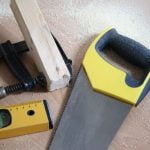Are home improvement or home equity loan rates better? When it comes to financing home renovations, it’s essential to understand the options available and how they can impact your finances. Home improvement loans and home equity loans are two popular choices for homeowners looking to fund their renovation projects. In this article, we will explore the concept of home improvement and home equity loans, and delve into the factors that determine the rates for each option.
When considering financing for home renovations, one of the key decisions homeowners face is whether to pursue a home improvement loan or a home equity loan. Both options have their own set of advantages and drawbacks, but understanding how the rates work for each can help in making an informed decision.
In this article, we will analyze the different types of home improvement and home equity loans available in the market, and shed light on how their respective rates are determined.
As we delve deeper into this topic, we will also discuss the pros and cons of choosing a home improvement loan over a home equity loan when it comes to financing renovation projects. By examining real-life examples and case studies, we aim to provide a comprehensive understanding of which option may be better suited for different situations.
So if you’re considering renovating your home and need financial assistance, read on to gain insights into whether home improvement or home equity loan rates are better for you.
Understanding Home Improvement Loan Rates
When considering a home improvement project, one of the key factors to take into account is the financing options available. Home improvement loan rates can vary depending on several factors, and understanding these options is crucial in making an informed decision. Here are some key points to consider when exploring home improvement loan rates:
- Types of Loans: There are various types of loans available for home improvements, including personal loans, FHA Title I Property Improvement Loans, and home equity loans or lines of credit. Each type has different interest rates and repayment terms.
- Credit Score: Your credit score plays a significant role in determining the interest rate you will receive for a home improvement loan. Those with higher credit scores generally qualify for lower interest rates.
- Loan Amount: The amount you need to borrow for your home improvement project can also impact the interest rate. Some lenders offer tiered interest rates based on the loan amount.
It’s important to shop around and compare rates from different lenders to ensure that you secure the best possible deal for your home improvement project. Additionally, consider whether a fixed or variable interest rate best suits your financial situation and long-term plans.
Ultimately, understanding the options available for home improvement loan rates and the factors that determine these rates can help you make an informed decision that aligns with your budget and goals for your renovation project.
Understanding Home Equity Loan Rates
Types of Home Equity Loans
There are two main types of home equity loans: traditional home equity loans and home equity lines of credit (HELOC). A traditional home equity loan provides a lump sum of money upfront, which is repaid over a fixed term with a fixed interest rate. On the other hand, HELOCs work more like a credit card, allowing homeowners to borrow against their home’s equity as needed and repay the amount borrowed with variable interest rates.
Factors Affecting Home Equity Loan Rates
Home equity loan rates are influenced by several factors, including the borrower’s credit score, loan-to-value ratio, market conditions, and the lender’s policies. Borrowers with higher credit scores typically qualify for lower interest rates, while those with lower scores may face higher rates.
The loan-to-value ratio, which compares the amount owed on the mortgage to the appraised value of the home, also plays a role in determining the interest rate. Additionally, market conditions and lender-specific policies can affect the rates offered to borrowers.
How Home Equity Loan Rates Work
Unlike traditional mortgages that have fixed interest rates, home equity loan rates can be either fixed or variable. Fixed rates remain constant throughout the loan term, providing stability in monthly payments. Variable rates, on the other hand, are tied to an index such as the prime rate and can fluctuate over time. Borrowers should carefully consider their financial situation and risk tolerance when choosing between fixed and variable rates for their home equity loans.
Pros and Cons of Home Improvement Loan Rates
When considering financing options for home improvement projects, one of the first things that come to mind is a home improvement loan. These loans are specifically designed to provide funds for renovations, repairs, or upgrades to a property.
One of the primary advantages of choosing a home improvement loan is the ease and simplicity of the application process. Compared to other types of loans, such as home equity loans, the approval process for a home improvement loan is generally faster and requires less paperwork.
Another advantage of home improvement loan rates is that they are often unsecured, meaning they do not require collateral such as your home or other property. This can be beneficial for homeowners who are not comfortable using their property as collateral for a loan. Additionally, some home improvement loans offer fixed interest rates, providing predictability in monthly payments over the life of the loan. This can be helpful for budgeting purposes and avoiding any unexpected increases in payments.
However, there are also potential disadvantages to consider when choosing a home improvement loan for financing projects. One drawback is that unsecured loans typically have higher interest rates compared to secured loans, which could result in higher overall borrowing costs.
Additionally, depending on the lender and your creditworthiness, you may be limited in the amount you can borrow with a home improvement loan, which could potentially impact your ability to complete larger-scale renovation projects. As with any financial decision, it’s essential to carefully weigh these pros and cons before moving forward with a home improvement loan.
Pros and Cons of Home Equity Loan Rates
Benefits of Utilizing a Home Equity Loan for Renovations
One of the major advantages of using a home equity loan for renovations is that it allows homeowners to access a large sum of money upfront. This can be especially beneficial for substantial home improvement projects, such as kitchen remodels or room additions, where the costs can quickly add up. Additionally, home equity loans typically offer lower interest rates compared to personal loans or credit cards, making them a more cost-effective financing option for larger renovation endeavors.
Another benefit of utilizing a home equity loan is the potential tax deductibility of the interest paid on the loan. In some cases, homeowners may be able to deduct the interest on their home equity loan if the funds are used specifically for home improvements. This can result in significant savings over time and provide an added financial incentive for choosing this financing option.
Drawbacks of Utilizing a Home Equity Loan for Renovations
While there are clear benefits to using a home equity loan, there are also drawbacks that should be considered. One primary concern is that by leveraging the equity in their homes, homeowners are essentially putting their property at risk. If for any reason they are unable to repay the loan, they could potentially face foreclosure, which poses a serious financial risk and stress.
Additionally, obtaining a home equity loan involves certain fees and closing costs, which can add to the overall expense of financing a renovation project. It’s important for homeowners to carefully consider these additional costs when weighing the affordability of this borrowing option.
Ultimately, while home equity loans offer advantageous terms and tax benefits, they also come with potential risks and added expenses that should be thoroughly evaluated before making a decision.
Comparing Interest Rates
When it comes to financing home improvement projects, one of the most important factors to consider is the interest rate. Home improvement loan rates can vary depending on the type of loan you choose and your creditworthiness. Generally, home improvement loans are unsecured, meaning they do not require collateral, which can result in higher interest rates compared to secured loans.
On the other hand, home equity loan rates are often lower than those of unsecured home improvement loans because they use your home as collateral. This reduced risk for the lender typically leads to lower interest rates for borrowers. Home equity loans also have fixed interest rates, providing stability and predictability in terms of monthly payments.
It’s important to note that interest rates for both home improvement and home equity loans can fluctuate based on economic conditions and other factors. For example, Federal Reserve decisions and market trends can impact interest rates, causing them to rise or fall over time.
| Loan Type | Interest Rate Range |
|---|---|
| Home Improvement Loan | 5% – 15% |
| Home Equity Loan | 3% – 8% |
Factors to Consider When Choosing
When deciding between home improvement loan rates and home equity loan rates, it is important to carefully consider several key factors. The first consideration is the purpose of the loan. Home improvement loans are specifically designed for financing renovation or remodeling projects in a primary residence, while home equity loans allow homeowners to borrow against the equity in their homes for various purposes, including home improvements.
Another important factor to consider is the interest rates and repayment terms. Home improvement loan rates may be fixed or variable, with repayment terms typically ranging from 5 to 30 years. On the other hand, home equity loan rates can also be fixed or variable, but they often come with shorter repayment terms than traditional mortgages.
In addition to interest rates and repayment terms, borrowers should evaluate the total cost of borrowing. This includes fees, closing costs, and any other charges associated with the loan. It is essential to compare the overall cost of both home improvement and home equity loans in order to determine which option best aligns with one’s financial situation and renovation needs.
| Factor | Consideration |
|---|---|
| Purpose of Loan | Differentiating between using funds for specific home improvements or general expenses |
| Interest Rates and Repayment Terms | Evaluating whether fixed or variable rates and longer or shorter repayment terms are more suitable |
| Total Cost of Borrowing | Comparing fees, closing costs, and other charges associated with each type of loan |
Case Studies and Examples
In conclusion, when it comes to deciding between home improvement loan rates and home equity loan rates, there are several factors to consider. Home improvement loans can offer lower interest rates and may be easier to qualify for compared to home equity loans. However, with a home equity loan, homeowners can typically borrow larger amounts of money and may have the potential for tax-deductible interest.
It’s important for individuals to carefully assess their financial situation, project needs, and long-term goals before choosing between the two options. Those considering a home improvement project should take into account their credit score, existing mortgage terms, and the amount of equity they have in their home.
On the other hand, those contemplating a home equity loan should be aware of the potential impact on their overall financial picture and consider whether they are comfortable using their home as collateral.
Ultimately, both types of loans can be viable options for financing home improvements, but it’s essential for homeowners to weigh the advantages and disadvantages of each carefully. Additionally, seeking guidance from a financial advisor or mortgage specialist can provide valuable insights into which option may be best suited based on individual circumstances. By thoroughly researching and comparing interest rates and terms, homeowners can make an informed decision that aligns with their specific needs and aspirations for their property.
Frequently Asked Questions
Is It Better to Take Out a Home Equity Loan or Home Improvement Loan?
When deciding between a home equity loan and a home improvement loan, it’s important to consider your specific financial situation and needs. A home equity loan allows you to borrow against the value of your home, while a home improvement loan is specifically designed for funding home renovations.
The best option for you will depend on factors such as interest rates, the amount of equity you have in your home, and the purpose of the loan.
Do Home Equity Loans Have Better Interest Rates?
Generally, home equity loans do tend to have more favorable interest rates compared to other types of loans because they are secured by the value of your home. This means that lenders see them as less risky, resulting in lower interest rates for borrowers.
However, it’s important to shop around and compare offers from different lenders to ensure that you’re getting the best rate possible for your specific financial situation.
What Is the Major Disadvantage of a Home Equity Loan?
The major disadvantage of a home equity loan is that it uses your home as collateral. This means that if you are unable to repay the loan, you could potentially lose your home through foreclosure.
Additionally, taking out a large sum of money through a home equity loan could also put a strain on your finances if you struggle to make the monthly payments. It’s crucial to carefully consider these risks before pursuing this type of loan.

I’m thrilled to have you here as a part of the Remodeling Top community. This is where my journey as an architect and remodeling enthusiast intersects with your passion for transforming houses into dream homes.





